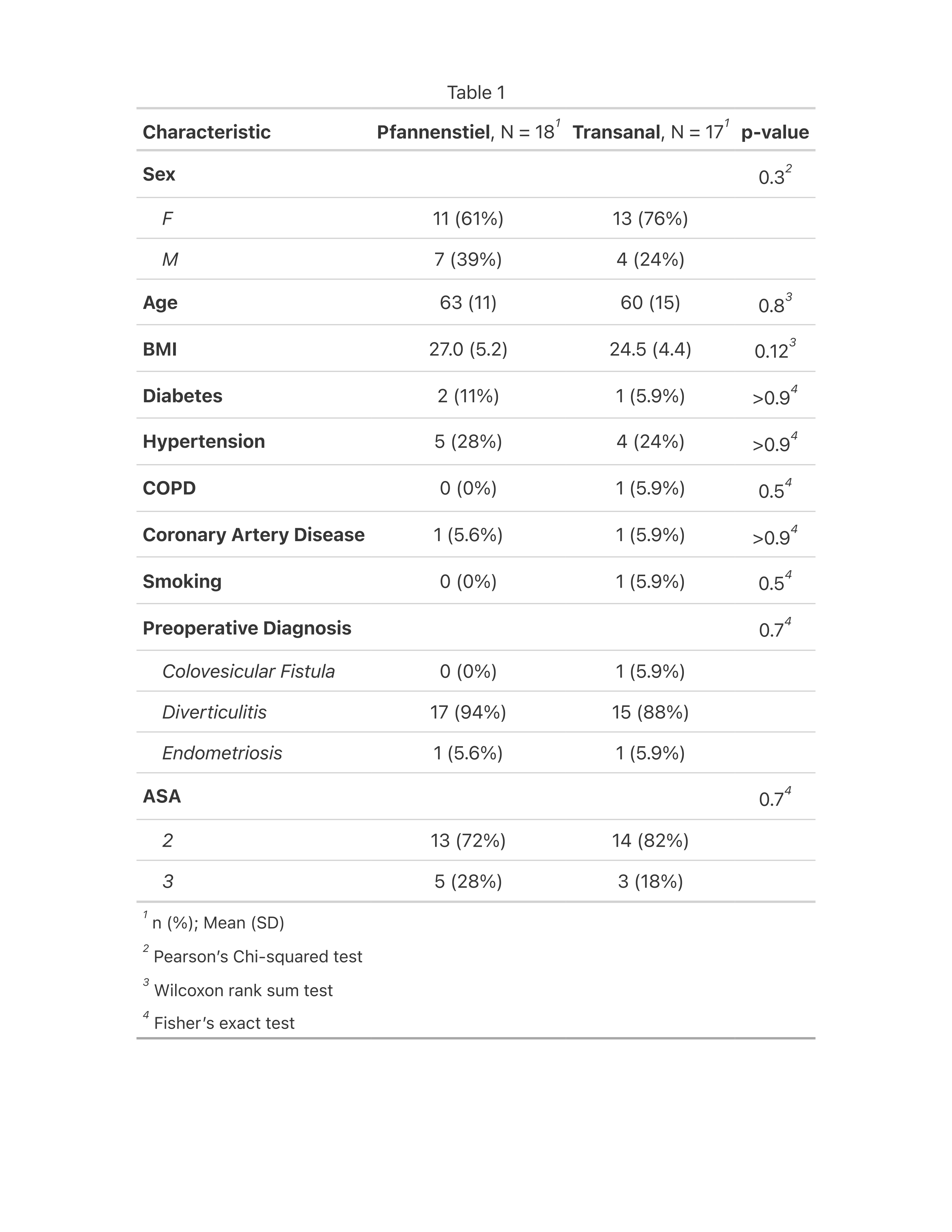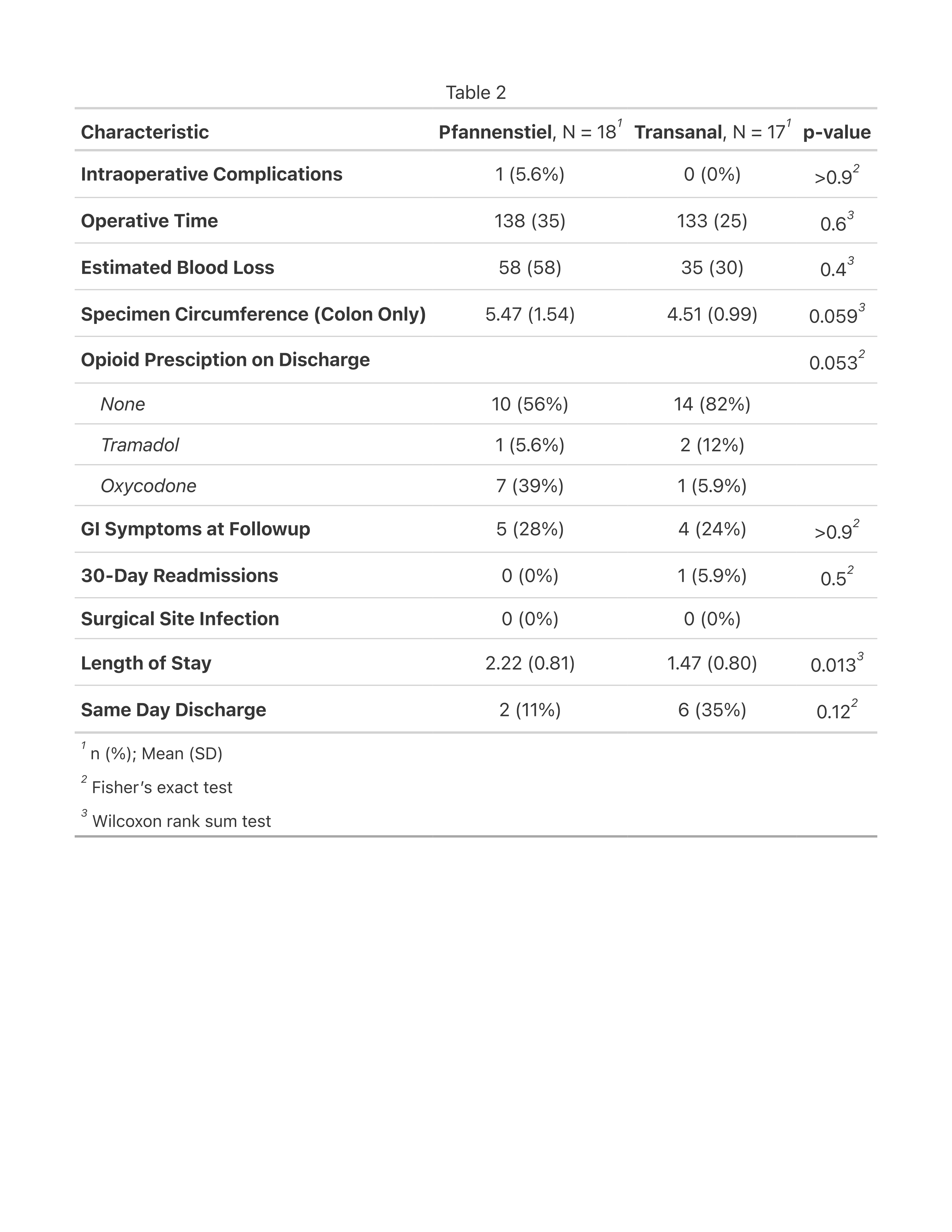Purpose/Background:
Transanal extraction (TAE) of the specimen during laparoscopic colon resections has been described as a technique to eliminate the need for a larger abdominal incision for specimen extraction. The technique has potential benefits of reduced postoperative pain, wound complications, shortened length of hospital stay, and improved cosmesis and quality of life. However, there is limited data regarding safety and postoperative outcomes after TAE compared with conventional extraction techniques.
Methods/Interventions:
A retrospective review was performed of all patients who underwent laparoscopic sigmoidectomy with transanal extraction by a single surgeon between 2021 and 2023. A control cohort of patients with similar demographics and comorbidities who underwent laparoscopic sigmoidectomy with extraction via a Pfannenstiel incision was selected from the surgeonís practice during the same time-period. TAE was performed by first dividing the mesentery from the colon of the specimen to facilitate extraction followed by insertion of a ringed forceps through the open rectum for retrieval. The anvil was then passed through the rectum into the abdomen and a side to end anastomosis was completed in the standard fashion. Patient characteristics and postoperative outcomes were compared using Fisherís exact test or Wilcoxon-rank-sum test as appropriate.
Results/Outcomes:
Of the 35 patients included in the study, 17 patients underwent TAE, and 18 patients underwent extraction via Pfannenstiel. Patient demographics were similar between the two groups, with average age 61, BMI 25.8, and ASA 2 (Table 1). The majority of patients (91%) underwent surgery for diverticulitis. Operative outcomes were comparable with no difference in operative time, estimated blood loss or intraoperative complications (Table 1). Circumference of the colonic specimen was smaller on average in the TAE group (4.5cm vs 5.5cm; p-0.059). There were no differences in postoperative complications, or complaints of GI symptoms at follow-up, however the TAE group had a significantly shorter hospital length of stay (1.47d vs 2.22d; p- 0.013). 6 patients in the TAE group were discharged on day of surgery compared to 2 in the Pfannenstiel group. The TAE group was also found to have a lower rate of requiring an opioid prescription on discharge (p- 0.053), however the difference did not reach statistical significance (Table 2).
Conclusions/Discussion:
Transanal extraction of the specimen during laparoscopic sigmoidectomy for benign disease is a safe and feasible alternative to Pfannenstiel extraction and is associated with a shorter length of stay and a trend toward decreased opioid prescriptions on discharge. Increased utilization of this technique in appropriate patients should be considered as part of efforts to promote early recovery after surgery.

TABLE 1

TABLE 2